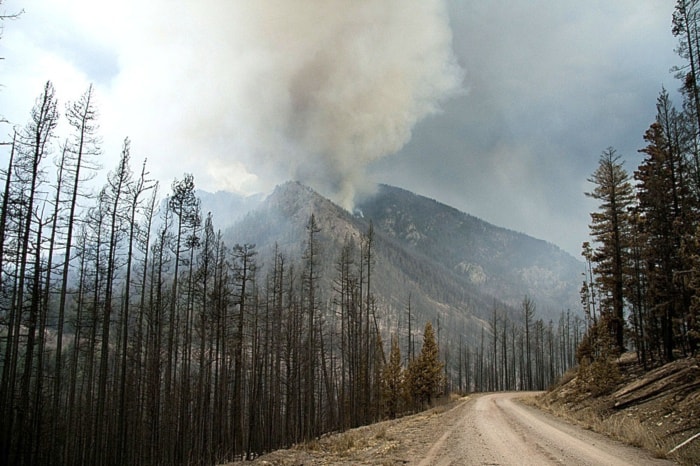Air quality warnings issued by Metro Vancouver are increasingly due to out-of-region wildfires rather than local pollution, according to a new report.
Two air quality advisories issued last year in August lasted a combined total of seven days and both resulted from smoke wafting here from distant fires, noted Metro's report on air quality in 2010.
That fits a trend of the "increasing influence of wildfire particulate" triggering warnings here, it said.
Historically, it has been ground-level ozone, not fires, that has degraded air quality in the summer and sparked advisories.
Particulate levels stayed within a Canada-wide standard, but exceeded Metro Vancouver's own more stringent target maximum at times during last August.
Metro runs 26 monitoring stations across the Lower Mainland to track air conditions and determine when public warnings are needed.
Ozone levels stayed within both the Canada-wide standard and the Metro target at all times last year.
That's an improvement because ozone had exceeded the Metro target at least once in each of the previous nine years.
Over the past two decades, the report said, detected levels of most major air pollutants have fallen.
It says emissions of carbon monoxide and nitrogen dioxide have been reduced – despite continued population growth in the Lower Mainland – through better vehicle emission standards and the AirCare program, while lower levels of sulphur in vehicle fuels has cut sulphur dioxide levels.
The shutdown of several refineries and lowered emissions from cement factories also cut sulphur dioxide levels.
While peak and average levels of carbon monoxide and nitrogen dioxide have continued to decline in recent years, sulphur dioxide and particulate levels have been relatively flat.
Cutting ozone is a challenge because it forms when volatile organic compounds – often from vegetation, including farms – reacts with nitrogen oxides on hot sunny days.
Peak ozone levels are down from the 1980s and early 1990s, but average levels have risen slightly.
The report cautions levels of pollutants can deviate from depending on local conditions.
A two-year study led by UBC researchers aims to determine more ways to cut ozone.
Metro is also aiming to reduce particulate from off-road diesel machinery.
The region is imposing new fees on excavators, loaders and similar equipment with heavily polluting older engines to put financial pressure on their owners to clean up.
